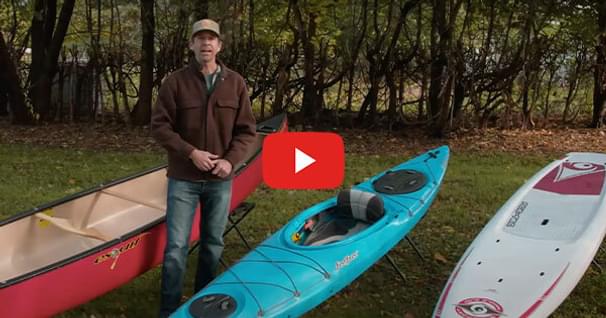Self Test: Recreational Kayaking
There are certain two word combinations in the English language that most of us among the living would prefer not having associated with our names. "Accident Report" and "Organ Donor" come to mind fairly rapidly. This is the beginning of a series of simple questions that you can ask yourself before you leave land to aid you in avoiding that rather dubious recognition. This test is by no means comprehensive and your input is invited. The contribution that you make may well save someone's life.
Just so we're on the same page, I'm going to define recreational kayaks as those that are less than 14 feet in length that are made for calm water, near shore usage. They may not have hatches, bulkheads or a rudder and may have a large open cockpit. Generally speaking they have inadequate flotation to be paddled ashore when they are swamped - they'll float, but not if they are trying to support your weight as well.
Facts:
- You can buy this type of boat at nearly any kind of outdoor sporting goods retailer.
- They make up the largest share of the kayaking market.
- Consumers buying these types of kayaks often leave the store with the least amount of safety education.
- Generally speaking these are the paddlers we read about in the afore-mentioned "accident reports". The culprit in these accidents is simply a lack of public education.
Usage:
Again, the designers of these types of kayaks really didn't intend them to be used for expeditions, open-water crossings and conditions more appropriate to "touring or coastal" kayaks. They were meant for a variety of calm water situations on gentle rivers and lakes during mild weather. They're inexpensive for the most part, have a comforting degree of initial stability and can be handled by most anyone. Rescues in them are simple if the are in their intended use category - if you fall out, stand up or swim to the near shore dragging the boat with you. They are extremely difficult to empty and re-enter from the water, even by very experienced rescuers. A deep water rescue of a recreational kayak even by a skilled sea kayaker can land everyone in the water and you'd better hope they're all dressed for immersion (see earlier article on "Dressing for the four Seasons").
The Test:
So, how do you know if what you are doing with this type of kayak is safe? Ask yourself these simple test questions:
- Can I swim to shore in the clothes I'm wearing in this environment?
- Can I get help quickly once I'm on that shore?
- Am I equipped to get myself warm once I'm there?
If the answer is "no" to any of these, then you should adjust what you're about to do until you can answer "yes" to them all. If you can't get a "yes", don't do it.
Example: Let's say you live in the north country where water is a solid in winter and you get an unseasonably warm weekend in April. You decide to go up to the cottage for a break and drag the kayak out of the shed and get a little exercise on the lake. It wonderful, the water is like glass, there's not a soul around--its nearly 80 degrees! You've got on a T-shirt; it feels so good to be wearing shorts and just for good measure you are wearing your PFD. Just when you think it can't get any better, you see an early Osprey come flying over looking for a little take-out food. Reaching behind your seat for the camera bag and wow, that was fast - and cold. You've capsized in 40-degree water, that warm air is no help to you now. Now you ask the question you should have asked before you left. You're a mile out, not a soul around - can you, the human Popsicle, swim that mile? Now other questions pop up - did I pay that life insurance premium? Why can't I feel anything?
This, and dozens of other examples are extremely plausible because we may have heard them before. They happen. Don't let them happen to you. So, remember, ask yourself those questions before you get into a pickle.
Related Articles
If you recently started the search for a new kayak then you know there are a lot of factors to…
Ken Whiting answers the big question for new paddlers - Do you go for a canoe, a kayak, or a stand up…
By changing how you edge and balance your boat you can increase your stability and adaptability. Using…
After the raw dimensions of length, width and depth, canoe performance is determined by hull shape.…



